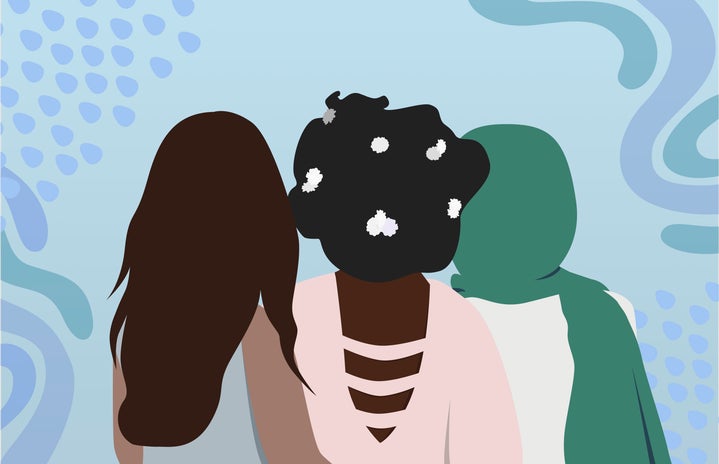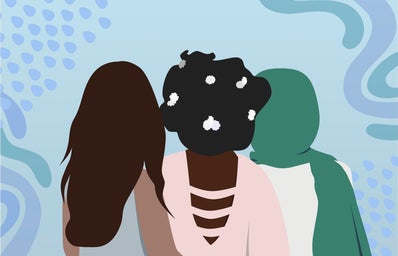In our modern age, beauty standards have become increasingly toxic, especially for young women, for whom “skinny” is synonymous with “pretty.” This association is simply untrue; beauty is in the eye of the beholder, as well as a constructed social standard. Neither beauty nor weight determine a person’s worth.
Sadly, because conventional social perspective says otherwise, eating disorders have ascended to some of the deadliest mental illnesses and psychiatric conditions. To put this into perspective – eating disorders contribute to approximately 10,200 deaths per year, with 26% of people who suffer from one attempting suicide. Additionally, it has been predicted that over 28.8 million Americans will develop an eating disorder sometime in their life.
Despite being one of the most lethal psychiatric conditions, eating disorders are also some of the least funded in terms of research and many are excluded from health insurance coverage. Therefore, it is of utmost importance to bring the conversation on eating disorders – including their characteristics, symptoms, and resources for support – into the spotlight.
Before proceeding, it’s important to discuss five critical points that aid in understanding and defining eating disorders (ED) by deconstructing some common misconceptions:
- EDs are not “extreme diets” or “phases” that all teenagers go through, and not all victims or sufferers of EDs are “skinny” and/or underweight.
- EDs cannot be compared to drug addictions; while a drug addict is able to return to some semblance of a “normal life” after withdrawal and rehabilitation, a person recovering from an eating disorder may not.
- The recovery period for EDs is difficult. It’s an uphill climb, not due to self-aggrandizement, vanity, or even the individual’s choice, but because sufferers often view progress as failure, which can propel them further into unhealthy eating behavior; this is in opposition to the recovery progress for almost every other type of illness, mental or physical.
- Causes of EDs are often more complex than a desire to “lose weight,” gain attention, or fit in.
- EDs are a diverse array of psychological disorders that are characterized by abnormal or unhealthy eating patterns.
- Anorexia
-
This eating disorder is characterized by one or more of the following: abnormally low body weight/BMI, intense fear of weight gain, and a distorted perception of weight or body image. It’s important to note that anorexia itself is not always about food. At times, the onset of this disorder may occur as a means to cope with personal emotional issues or environmental stress factors.
Sufferers of anorexia often equate their weight to their self-worth, which is part of the reason why it’s extremely hard to combat this disorder. As a result, these individuals often try to prevent weight gain and continue weight loss at all costs.
Physical symptoms of anorexia include extreme weight loss, abnormal blood count, fatigue, and skin discoloration, among others. Emotional, behavioral, or psychological symptoms can include adopting rigid eating rituals, consistent complaints about being fat, and social withdrawal, among others.
- Bulimia
-
Bulimia is associated with binge and purge cycles. During binge cycles, victims eat excessive amounts of food and are often unable to control their food intake. These are followed by purge cycles, attempts at getting rid of “extra” calories through unhealhty, compensatory behaviors.
Some examples of the purging include regularly inducing vomiting, as well as misusing laxatives, weight-loss supplements, diuretics, or enemas after bingeing. Other characteristics of the disorder are fasting, strict dieting, and/or excessive exercise.
People with bulimia are often within the normal weight range for their age and height, as opposed to anorexics. However, they are similarly fearful of gaining weight, possess a strong desire to lose weight, and are generally extremely dissatisfied with their bodies.
Physical symptoms of bulimia include dental problems and knuckle calluses from self-induced vomiting, heartburn, and dizziness, among others. Emotional, behavioral, or psychological symptoms can include frequent trips to the bathroom in order to purge, food hoarding, extreme mood swings, and more.
- Binge Eating Disorder
-
One of the newest eating disorders formally recognized in the DSM-5 – yet already the most common eating disorder in the United States – binge eating disorder is characterized by the consumption of large and excessive amounts of food in a short time frame, even if the individual consuming the food isn’t actually hungry. Additionally, those who suffer from this disorder also show a consistent lack of control during these “binges,” in that they are physically and mentally unable to control themselves to stop eating.
Sufferers of binge eating episodes are often plagued by external stress that leads to three or more of the following characteristics: eating much more rapidly than normal, eating until they feel uncomfortably full, eating large amounts of food when they’re not feeling physically hungry, eating alone because they’re feeling embarrassed by how much they’re eating, and/or feeling disgusted, depressed, or guilty after bingeing.
Other symptoms of binge eating disorder include noticeable fluctuations in weight, stomach cramps, and difficulty concentrating, as well as feeling depression, disgust, or shame at one’s eating habits, among other symptoms.
- Resources for Help & Support
-
Eating disorders can often consume a person without their consent, and sometimes without their knowledge. Thus, it is important to be aware of the symptoms, characteristics, and available help and support resources.
If you or someone you know – be it a loved one or distant acquaintance – shows any symptoms for the eating disorders listed above, please see the information below for help and support.
While I understand that it may be hard to take the first step – regardless of whether you personally suffer or know of someone else who is struggling – the fight against an eating disorder is better done together than in solitude. The top priority of anyone’s life should be themselves, not the number they see when they step on a scale.
The following include a list of options to help those affected during the current pandemic:
Contacting a health care professional and setting up a treatment plan
The National Eating Disorder Association: Feeding Hope
This is a non-profit organization dedicated to supporting individuals and families affected by eating disorders. Their mission is to help with prevention, cures, and access to quality care for eating disorders. They offer remote help through an online helpline that provides free consultations through chatting, texting, or phone calls.
This organization provides free, accessible services in an effort to aid those who suffer from or know someone who suffers from an eating disorder. ANAD provides a free helpline, virtual support groups, and peer support mentors. You can also search treatment options in your area, though ANAD only offers the names of professionals who may be able to provide guidance and help – these services are not always free of charge, and it depends on the medical professional.
This is an online resource that offers articles promoting education and awareness, as well as a search tool to find eating disorder treatment centers near you. Their mission is to offer hope, information, and resources to individuals who suffer eating disorder, their family members, and treatment providers. Some services on this site are not free, and only informational articles can be accessed remotely; treatment center and program options are offered in-person.


